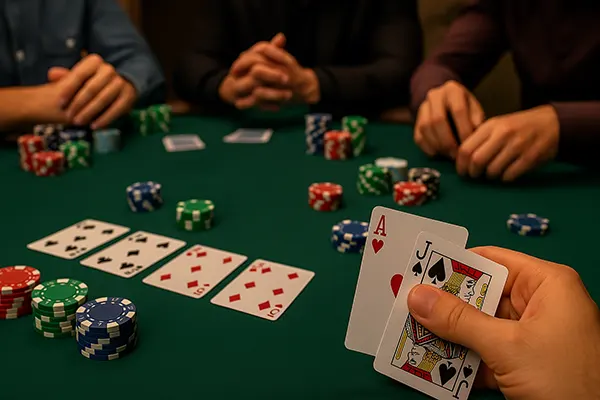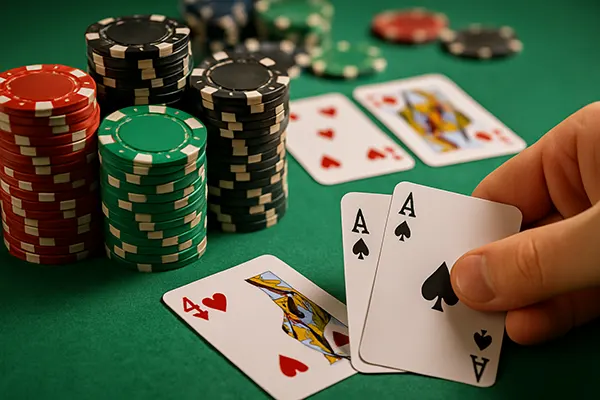
The Role of Position in Poker: Examples of Hands from Early, Middle, and Late Positions
Position at the poker table is a fundamental concept that often determines the success or failure of a hand. Whether you are in early, middle, or late position, your seat can influence your strategy, the value of your hand, and your ability to extract information from opponents. Understanding how to adjust your decisions depending on position is crucial for building a long-term edge in any form of poker.
Early Position: Limited Information and Cautious Play
In poker, early position typically refers to the first few players to act after the big blind. This includes under the gun (UTG) and UTG+1 in most full-ring games. Because players in early position must act before the majority of the table, they do so with limited information, making this seat one of the most difficult to play profitably. For this reason, tighter hand selection is necessary to avoid losing chips against stronger hands.
Let’s say you are UTG in a 9-handed cash game and are dealt A♠ Q♠. While this is a strong hand, it requires careful navigation. Opening with a raise is standard, but you must be prepared to face 3-bets or calls from players in later positions who have more information. If several players call, your ability to control the pot size diminishes, potentially weakening your hand’s relative strength by the turn or river.
Another common scenario involves pocket jacks (J♣ J♦) from UTG. Many players struggle with overpairs in early position, especially when overcards appear on the flop. The lack of positional advantage often forces tough decisions out of position, especially against aggressive opponents. Playing tight and avoiding marginal hands in early position helps mitigate risk.
Strategic Considerations for Early Position
To succeed in early position, focus on playing premium hands and avoid speculative holdings like suited connectors or low pocket pairs. These hands perform better in positions where you can control the betting.
Additionally, be mindful of stack sizes and player tendencies behind you. If several aggressive players are seated in late position, it may be wise to adjust your opening range slightly tighter.
Discipline and patience are key. Folding borderline hands like K♦ Q♦ or A♦ J♣ in early position can prevent tough post-flop situations and preserve your chip stack in tournaments or cash games alike.
Middle Position: Flexibility and Balanced Ranges
Middle position sits between the extremes of early caution and late aggression. Typically including players such as MP1, MP2, and sometimes the hijack in 6- or 9-handed games, this spot offers more information than early position but still faces players yet to act. Here, the goal is to expand your range slightly while maintaining strategic balance.
For example, holding 10♥ 10♣ in middle position gives you the flexibility to raise or flat-call depending on previous action. If no one has entered the pot, you can open confidently. If there’s been a raise from early position, you might opt to flat call and see a flop, especially if the raiser is tight and only raises strong hands.
Middle position also allows for mixing in suited connectors like 8♠ 9♠ or suited aces such as A♣ 5♣. These hands can be profitable, particularly when used in semi-bluffs or disguised draws. However, your play should still be disciplined, especially if there’s potential for re-raises from the button or cutoff.
How to Approach Middle Position Hands
Start by categorising your hands into three groups: strong value (AQ+, 99+), speculative (suited connectors, suited aces), and marginal (KJ, QJ offsuit). Play strong value hands aggressively, especially when first in the pot.
Speculative hands are better used for pot control and position play. For example, calling with 6♠ 7♠ allows you to hit hidden straights or flushes while avoiding high-variance confrontations unless the board texture supports it.
Always consider the risk of acting before late position players. Keep an eye on the button’s behaviour, as they’ll have the best post-flop control and might use that against marginal ranges from middle position.

Late Position: Information Advantage and Aggression
Late position—especially the cutoff and button—provides a significant advantage in poker due to the amount of information available. Players in these seats act after nearly all others, enabling them to make more informed and aggressive decisions. This is where positional power is most evident and can be used to steal blinds, isolate weaker opponents, and extract value from marginal hands.
Let’s consider being on the button with Q♠ 9♠. If everyone folds to you, this is a classic spot to raise and pressure the blinds. Even if they call, you will act last post-flop, allowing you to play more effectively. The same principle applies with suited connectors and one-gappers such as 7♣ 9♣ or even weaker aces like A♥ 2♥ when the table folds to you.
Another benefit of late position is the ability to float flops—calling light with the intention of taking the pot away later. For instance, calling a continuation bet with J♦ 10♦ on a dry board, then betting turn when the aggressor checks. These tactics are far riskier from early seats but become powerful tools when used correctly from late position.
Mastering the Button and Cutoff
Late position allows for wider opening ranges. Depending on the table dynamics, you can open as much as 40% of hands from the button, especially in tight or passive games. Use this flexibility to pressure opponents and force mistakes.
When playing from the cutoff, remain aware of the button’s tendencies. If they frequently 3-bet, tighten up slightly. However, against passive or predictable players, you can maintain wide openings and adjust based on results.
Finally, use your position post-flop to control the pot size, dictate action, and make well-timed bluffs. Even mediocre hands become strong when backed by positional advantage and informed decision-making.



